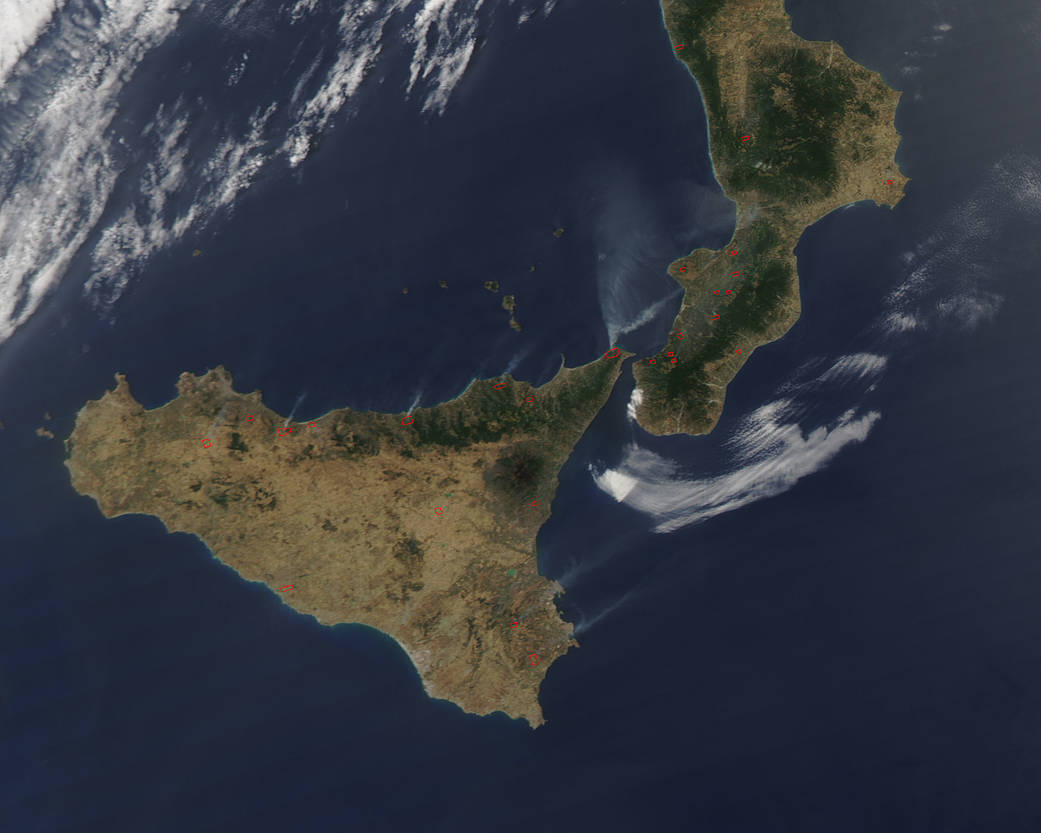Since June 15th, firefighters have intervened to assist at a total of more than 10,000 instances of vegetation fire, the majority of them affecting the southern part of Italy including Sicily. In this image collected by NASA’s Aqua satellite using the Moderate Resolution Imaging Spectroradiometer instrument on July 30, 2017 the actively burning areas are outlined in red. Each hot spot, which appears as a red mark, is an area where the thermal detectors on the MODIS instrument recognized temperatures higher than background. When accompanied by plumes of smoke, as in this image, such hot spots are diagnostic for fire.
Extremely dry conditions due to a lack of rainfall in the area has contributed to the outbreak of fires across the region. After the second hottest spring in 60 years, and the driest in that same period, Italy has missed out on about a month’s worth of rainfall leaving lakes and reservoirs severely depleted and making firefighting that much more difficult. In Sicily, June saw 40 percent less rainfall and temperatures up by 1.7C (35 degrees F) compared to the averages for the month; conditions which, together with strong winds over the weekend, aided the fires’ rapid spread.
NASA image courtesy Jeff Schmaltz LANCE/EOSDIS MODIS Rapid Response Team, GSFC. Caption by Lynn Jenner with information from local Italian news sources.




























